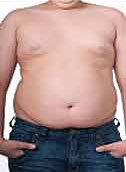

Children who are severely obese, especially boys, have risk factors that increase their odds of getting heart disease and diabetes, new research finds.
“As the severity of obesity in kids gets worse, their risks for heart disease and diabetes goes up,” said study author Asheley Skinner, an associate professor of pediatrics and health policy management at the University of North Carolina at Chapel Hill.
Children who are the most obese, she said, are twice as likely to have some of the risk factors for heart disease and diabetes as the mildly obese.
The fact that the doubling of risk came from a comparison to mildly obese children, not normal-weight kids, is especially concerning, she said.
The study is published Oct. 1 in the New England Journal of Medicine.
Severe obesity is on the rise among U.S. children and young adults, according to background information in the study. Four percent of children were severely obese in 1999-2004. By 2011-2012, 6 percent were severely obese, the study said.
Skinner and her colleagues reviewed data from the National Health and Nutrition Examination Survey (NHANES). They looked at statistics from more than 8,500 children, ages 3 to 19, who were overweight or obese. About 47 percent were overweight. Thirty-six percent were considered class 1 obese, 12 percent were class 2 and about 5 percent were class 3, the study said. (The higher the class, the more obese the child.)
For reference, a 10-year-old boy who is 4 feet 6 inches tall would be considered class 1 obese if he weighed 95 pounds, class 2 at 115 pounds and class 3 at 130 pounds, Skinner said.
Researchers looked at such risk factors as cholesterol levels, blood pressure and blood sugar levels. Using the children in class 1 as the reference or comparison group, the researchers found that those with class 2 or 3 obesity were about 1.6 to nearly two times as likely to have low levels of the so-called good (HDL) cholesterol. Looking at boys separately, those who were most obese were more than twice as likely to have low HDL cholesterol compared to those who were mildly obese.
When the researchers looked at blood sugar levels, kids with class 2 or 3 obesity were 1.5 to 2.6 times more likely to have blood sugar problems. And again, the findings were worse in boys.
Blood pressures were worse in those who were class 2 or 3 obese, too. Boys who were severely obese were more than seven times more likely to have high blood pressure than those who were mildly obese.
Skinner said the researchers can’t explain why the boys seemed to be at higher risk from severe obesity.
The findings are a wake-up call that should trigger more effort at prevention and intervention, the researchers said.
Dr. William Muinos agreed. He is the associate director of pediatric gastroenterology and directs the weight management program at Nicklaus Children’s Hospital in Miami. He reviewed the study’s findings.
Muinos said this study’s results ring true in his patient population. He sees children with high blood pressure, some as young as 8 years old. He said he also sees unhealthy cholesterol and blood sugar levels in young patients.
Muinos tells patients and their parents that children can get severely obese more easily than adults can, partly due to such factors as growth hormones. “In the growing years, if you eat the wrong stuff, you become a better candidate to make body fat,” he said.
His advice for parents? Load up your children’s plates with vegetables at lunch and dinner. Muinos says aim for three to five vegetables at each meal. He also advises sticking to healthy protein sources such as fish, chicken or turkey, and to limit carbohydrates.
Exercise is a must, he also tells parents. “Five days a week, an hour a day,” he said. “It can be a simple as walking your dog.”
More information
To learn more about how to help children control weight, see National Institute of Diabetes and Digestive and Kidney Diseases.
Source: HealthDay
Copyright © 2025 HealthDay. All rights reserved.

Leave a Reply